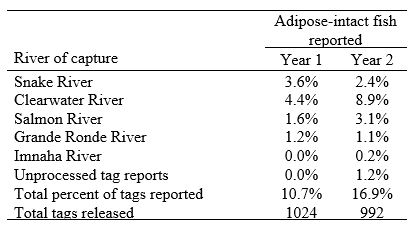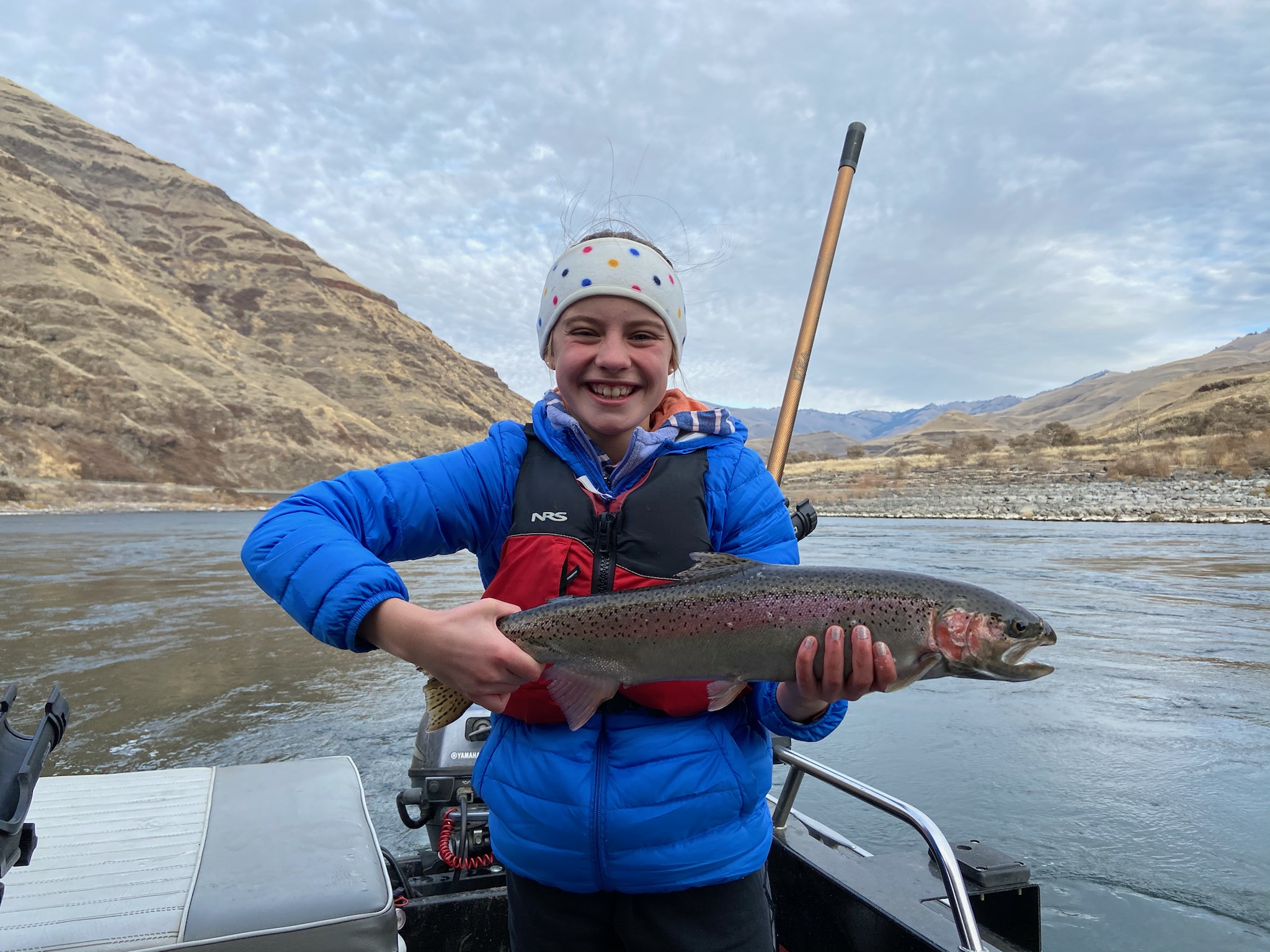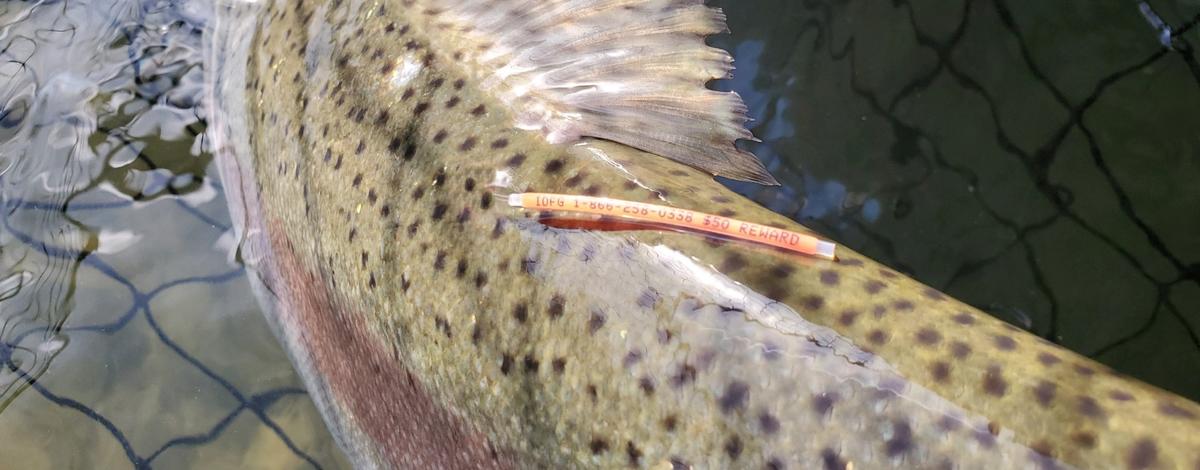Written by Will Lubenau, University of Idaho
As we near the end of the year, it is a good time for another update on the University of Idaho and Idaho Fish and Game steelhead study. Lately, we have been comparing tag reports from the two years of the study to look for differences in where, when, and how many steelhead are being caught around the Snake River Basin.
Here's what we are seeing so far.
The table below has the percentage of the total tags released that anglers reported as caught by December 9th in both years of the study. For example, in year 1 of the study, 3.6% of the 1,024 adipose-intact fish tagged were caught in the Snake River by December 9th.

There are some interesting things to point out in the table. We have had an overall increase in the percentage of tags reported this year for adipose-intact fish. We still have data to go through, but there are several possible reasons behind this. The better return of steelhead may have increased angling effort, or with the COVID-19 pandemic, more people got out fishing for outdoor activity. It is also possible that anglers are simply doing a better job of reporting tags as more people are learning about the study.

There are also differences between years on the different rivers. Percentages increased on the Clearwater and Salmon and decreased on the Snake. The biggest increase occurred in the Clearwater River. It remained open this year, whereas last fall it was closed to angling for over two months. Obviously, this played a role in the increased number of reported tags. In addition, the Clearwater River is where many of adipose-intact hatchery steelhead return above Lower Granite Dam (for more information on hatchery fish with an adipose fin click here). That means a number of the adipose-intact fish reported as caught from the Clearwater are adipose-intact hatchery steelhead. In the first year of the study, about 22% of the total adipose-intact fish reported were adipose-intact hatchery fish. We will know how many of the adipose-intact fish reported this year are hatchery fish once we look at the genetics of the tagged fish this year.
There are still many things to consider when looking at the data for this project and we will keep you updated as we continue to dig deeper! If you are able to get out steelhead angling in the next few months, please examine any fish you catch for a tag located near the dorsal fin. Some tags can be hard to spot now that they have been on fish for a few months, so keep that in mind. Thanks to all anglers who have reported tags for the study!
If you need to report a tagged fish, please go to https://idfg.idaho.gov/fish/tag/add.
For more salmon and steelhead articles please visit the Wild Salmon and Steelhead page.

